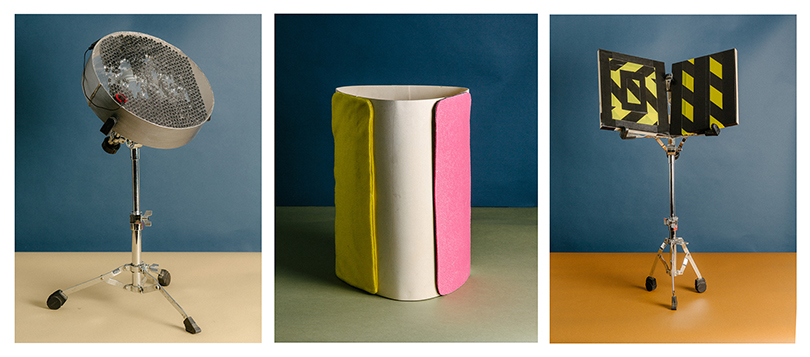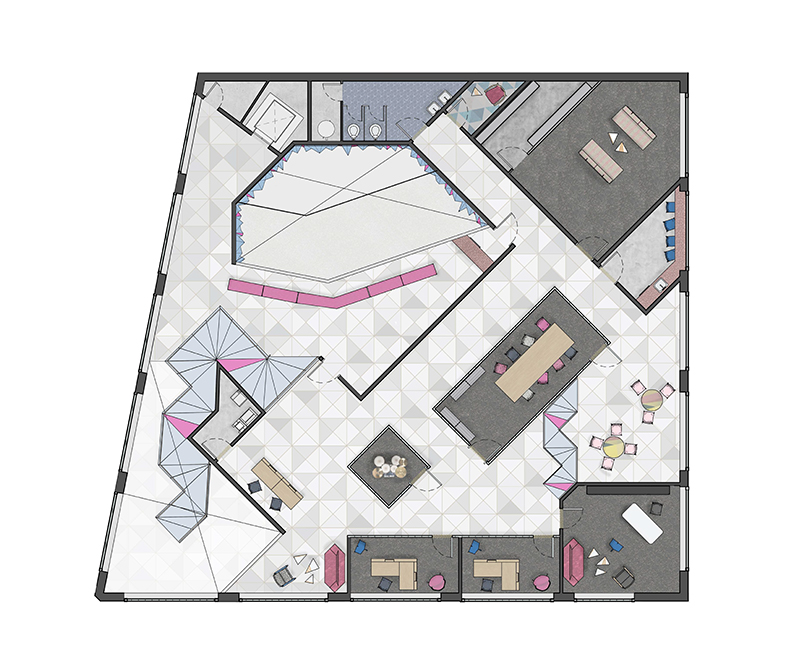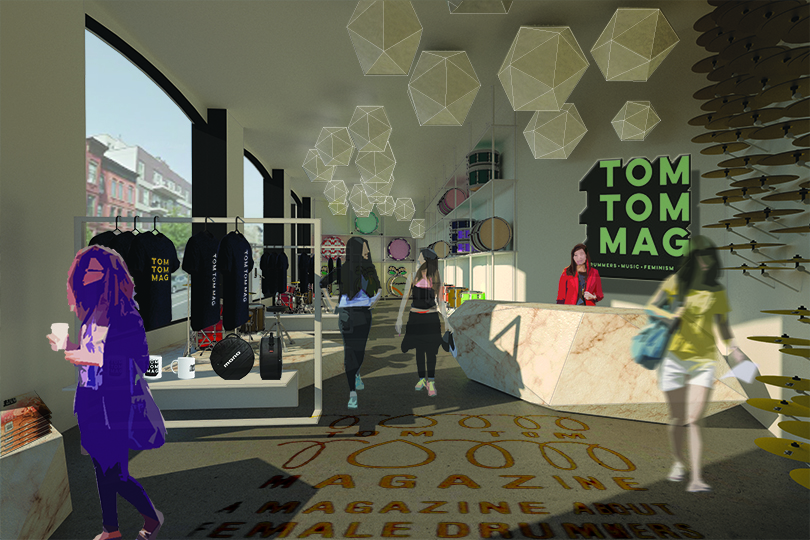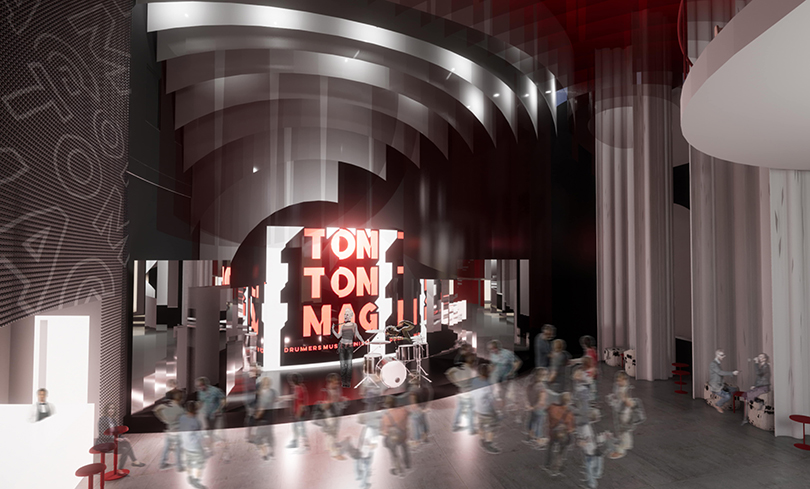
From the pages of Prattfolio, this article is part of a series of conversations among faculty and students on the subject of student work. This installment features Sarah Strauss, Visiting Associate Professor of Interior Design, with Angela Bouton, MFA Interior Design ’19; Ritika Saraf, MFA Interior Design ’19; and Ziqian Wang, MFA Interior Design ’19.
In architect and drummer Sarah Strauss’s interior design studio Music, Media, Feminism, students explored personal experiences and ideas about feminism in a collaborative zine, then—with women and gender nonconforming musicians as their muses—reimagined the standard drum set for more bodies before designing multiuse-space concepts for a feminist drumming magazine.
SARAH STRAUSS: As I was writing this class, I had this idea: I’m going to get 12 women to all play the drums—make noise, be rowdy and loud, and show their power. That was not just a symbolic act, but a real definitive taking-over-space. I wanted them to have a fearlessness about making noise, and doing so unapologetically.
ANGELA BOUTON: Going into my drum design, I was analyzing these old ads in fashion magazines. They were always like, Your husband would love you in this. Why can’t she just wear it because she likes it? I got the idea of designing a drum set that looked like handbags, which you could take out of your closet and assemble and bang on—she’s fabulous, her drum set is fabulous, and she’s not apologetic, she owns it.
RITIKA SARAF: My idea was to make something very light, very transportable, and you can assemble it easily. I wanted to make this triangular form so all the parts come closer to your body and it’s easier to hit them.
ZIQIAN WANG: I wanted to design a drum that is flattened, so it can be easy to [carry]. This is a silkscreen frame, and I used tape to cover it. Because we can tape or color it whatever [way] we want, we can show our personalities. And the sound can change when you add more layers.
SS: This studio moved from the personal to physical, then to the conceptual: How do we actually make feminist space? Everybody took some direction from the early projects and then did research to figure out what it is about our existing culture that makes us feel hedged in, that we’re not necessarily in control of it.

AB: I went off of my idea of domesticity and started analyzing quilting through different cultures, different time periods. Around the world, a way that [women] get out their grievances is through quilting—they make activist quilts. I went with the idea of tessellations and made an extruded quilt in the floor plan. As part of the program, we had to design a performance space, so I designed this tessellated backdrop that could be combined or flattened, and you could change the acoustics of the room.
RS: I was inspired by the zines that we made—so many stories, and I felt like there were so many things that women have struggled through. I wanted to make a space which could be really dominant and call out: I am a feminist space, I exist here. I used this idea of cloud and lightning: the “lightning” was an urban street in my space which connected the outdoor to the indoor, and the “cloud” was acoustical elements that could create different atmospheres for the performance space.

ZW: My idea came from fashion trends of women’s wear. In the past, lots of women were forced to wear uncomfortable clothes. My concept came from [the idea that] people have the right to choose their appearance, be whatever they want. I chose a curtain system that would create public space or private space—and it also has acoustic effects.
SS: You did this great poster on clothes as a form of control—then took clothing and used it as a design element, and changed that function. It was exciting to see all of the ideas happen, and for everyone to understand that the world is not just as it is—we are here to change the world.

RS: The studio gave us this sense of confidence and empowerment. There are people who think like you and there is a way to make a difference.
AB: I also found it was good to experiment. Test things out, see what happens, be messy. Which also ties into the idea of do what you want, be a feminist, be who you want.
ZW: Try whatever we can and don’t be afraid to fail. Just be free.
Images: Drums by (left to right) by Angela Bouton, Ritika Saraf, and Ziqian Wang, photo by Daniel Terna; video still featuring spread of students’ collaborative zine; interior designs by (top to bottom) Angela Bouton, Ritika Saraf, and Ziqian Wang.